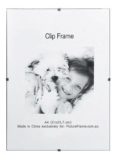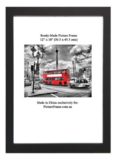Even weak daylight rays will slowly but surely fade the inks in a photograph or print by "bleaching" the colo urs unless you have conservation picture framing glass. All light contains ultraviolet or "UV" rays and most picture frames are glazed with ordinary, clear picture framing glass. This type of glass blocks only about half of the UV rays and will not conserve colours or prevent fading. To retard fading, as absolute prevention is .. almost impossible, ask your picture framer to use"UV" filtering glass While this ... special type of glass is dearer, it has been proven to block over 97% of the harmful "UV" rays.
urs unless you have conservation picture framing glass. All light contains ultraviolet or "UV" rays and most picture frames are glazed with ordinary, clear picture framing glass. This type of glass blocks only about half of the UV rays and will not conserve colours or prevent fading. To retard fading, as absolute prevention is .. almost impossible, ask your picture framer to use"UV" filtering glass While this ... special type of glass is dearer, it has been proven to block over 97% of the harmful "UV" rays.
UV glass is certainly worth considering when picture framing any item which is irreplaceable or of any commercial, sentimental, historical or, emotional or personal value. Most Australian picture framers generally stock picture framing glass in three varieties. Clear float glass , non-reflective (etched on one side or both sides to reduce reflection) and "UV" filtering clear and museum quality. Specialist picture framers, conservators and museums have access to and use other, specialised variety of glass for specialised picture frames or museum picture framing.
These specialisations are beyond the scope of this blog and discussed here. Precious, valuable and irreplaceable artwork if at all framed, should be glazed with UV-blocking glass to combat the fading of the inks or pigments. These compose the colours and give contrast to t he printed matter so that it is visible to us. UV rays are present in al light, sunlight, artificial incandescent and artificial fluorescent. Sunlight presents the most (so far as artwork is concerned) danger.
Its UV energy is about 720nm. Artificial, indoor lighting such as fluorescent also carries sine but tungsten, not as much. UV rays break the inner bonds of emulsions, pigments and colours. The image becomes faded and looks washed out. This phenomenon is known as photolysis. Another danger to UV exposure is photo-oxidation. The same colour particulate molecules mentioned before become sensitive to oxidation as a combination of mixing with oxidizing agents such as ozone.
The long term result contributes to the "yellowing" or paper. That said, scientific research indicates that the major source of light in a home is sunlight coming though the window panes. But because we want to "see" our framed pictures, we don't keep them locked away in a dark drawer though this is probably a good way of prevent fading. Strangely enough, if we keep photos stored in shoe boxes or in photo album sleeves, these may suffer from the deterioration known as "dark fading".
This is the cumulative damage by pollutants, agents, chemicals and trace elements that do not need ambient light. Rather, dark fading is cause by concomitant factors such heat, humidity, gases, particulates and pollution. Typically photos are stored in albums, inside houses and at room temperature of about 20c. But this high temperature shortens the life duration of the photos which should really be store at much cooler, and controlled temperatures.
Then again, we don't really like to store our photos inside the refrigerator. So, if we are to display our pictures on our walls, we ought to sure that, perhaps apart for disposable decorator prints and posters, all artwork dear to us ought to be glazed with Ultra Violet (UV) protection conservation picture framing glass. For additional help and advice on handling and caring for your art go Picture Frames and Art Care page. Thank you for reading this post "About Ultra Violet (UV) protection conservation picture framing glass".









Our grandad was in W.W.II, fought in New Guinea and survived the Kokoda Trail. We’re very proud of him also because three in our family have made careers in the armed forces. Granpa got several decorations including handwritten letters and commendation from U.S. General McArthur and Field Marshal Blamey. Gramp never wanted a fuss made of all this and he just kept all these medals and documents in an old mess tin. It wasn’t until after he died that we were able to organize a proper memorabilia display frame. We had to go to a specialist in Canberra as the job was too complex and detailed for our local picture framer. It cost us nearly $3000 but it’s absolutely fantastic! It was all framed to museum standards and of course the glazing was anti Ultra-Violet conservation glass. We didn’t want those valuable signed letters and commendations fade away with time.
Some picture framers don’t have or can’t supply UV glass and may sometime suggest diffused, or non-reflective glass as an alternative to UV glass. But this glass is much like clear glass which only blocks about 55% of UV rays so don’t IT put in your picture frames if you really care about your art.
I put several of my family photos into department stores photo frames and then I read a few articles online like this one here about photographs fading. The problem though is the greed of picture framers. Only one of them would change the glass to U.V. protection glass in my old frames and even he wanted $65 x frame. The other two wouldn’t change the glass on my old frames and insisted instead on full conservation picture framing at about $180 x photo. Why on earth is changing a small small photo frame glass so expensive? If I could find second-hand or used U.V. glass I’d do this myself.